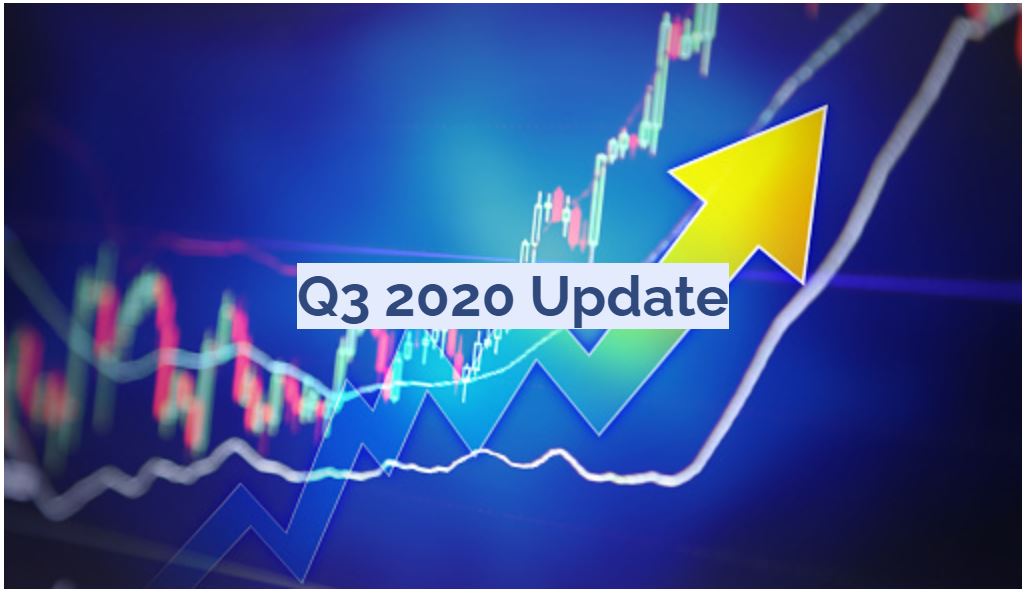Dear Colleagues,
As we approach the start of the eighth month of the “new normal” since the start of the pandemic, I pray that you, your loved ones, and those you serve remain well.
The Pension Boards has remained fully operational throughout this time, even as most of our staff continues to work remotely. Our commitment to serving you from the intersection of faith and finance remains our primary focus, as it has for more than 106 years.
One of the ways in which we seek to meet your needs as a member of the Annuity Plan for the United Church of Christ is by offering a diverse line-up of investment fund options for members with non-annuitized accounts, including several Target Annuitization Date (TAD) Funds designed to simplify your investment decisions by automatically reallocating your balance as you approach the specified date.
Please be advised that the Target Annuitization Date 2020 Fund (TAD 2020) will close on December 31, 2020. If you have an accumulation balance in the TAD 2020, you will need to select one of the following two options:
- Annuitize your account: Please notify Member Services at 1.800.642.6543 no later than October 31, 2020.
- Select a replacement fund for the TAD 2020: Please notify Member Services at the number listed above no later than 12:00 p.m. on November 30, 2020.
Any balance remaining in your TAD 2020 on December 31 will automatically be moved to the Stable Value Fund.
I am pleased to report that two new TAD Funds will be introduced in early 2021: TAD 2045 and TAD 2050, designed for members with a longer retirement time horizon. Look for more information on these new offerings later in 2020.
Please take a few moments to read the third quarter 2020 financial market update and analysis from Chief Investment Officer David Klassen (below). Also be reminded that under the CARES Act, non-annuitized Annuity Plan members who have been financially impacted by the pandemic (as defined in the Act) are eligible to take COVID-Related Hardship Withdrawals of up to 50% of their personal employee pre-tax contributions (also known as tax-sheltered annuity or TSA contributions) or personal after-tax contributions, with a maximum of $100,000. Click here for more information.
Wishing you good health and continued blessings,
Brian R. Bodager
President/CEO
 New Video!
New Video!
Fireside Chat Series - Episode #9: Target
Annuitization Date (TAD) Funds Update
David A. Klassen, Chief Investment Officer
Global financial markets continued to be positive in the third quarter, led by emerging markets. Despite investor concerns regarding lofty valuations (U.S. big tech) in September, the Standard & Poor’s 500 Index (S&P 500) remained positive for the quarter and year-to-date (YTD).
The unprecedented fiscal and monetary stimulus packages around the globe have kept markets strong for now. Large-cap stocks (S&P 500) returned 8.93% in the quarter and 5.57% YTD, and small-cap stocks (Russell 2000 Index) were up 4.93% in the quarter and down 8.69% YTD. International developed stocks were up 4.80% for the quarter and down 7.09% YTD, and emerging market equities were up 9.56% for the quarter and down 1.16% YTD. Fixed-income returns also continued to be positive, with riskier credit strategies and emerging market debt leading the way.
The economy rebounded strongly from its low, although the speed of recovery going forward will be predicated on the coronavirus and vaccine developments and further policy supports. Industries hard hit by COVID-19 continued to improve in the third quarter but may face increased pressure as the winter approaches with more closures and restrictions. In addition, there continues to be economic and policy uncertainty due to the upcoming U.S. presidential election.
How have the Pension Boards funds performed?
All Pension Boards Funds are in the top half of their peer groups for the year-to-date, net of all fees, according to Lipper, a well-known fund rating service. The exception is the Stable Value Fund, which is still well ahead of its benchmark. We hope you agree this is a significant achievement in this period of high volatility and uncertainty. The appreciation of several Funds in the quarter is notable and stands in stark contrast to the difficult first three months of 2020.
The Stable Value Fund has been the bedrock retirement investment it is designed to be, with slightly positive performance of 0.47% for the quarter and 1.24% YTD, backed by insurance guarantees by providers such as Prudential. However, the long-term return potential is lower for this fund than others.
The Bond Fund has continued to have positive returns in the quarter of 1.35% and is up 6.75% YTD, benefitting from solid asset allocation and security selection. As the market returned to a risk-on posture, diversifying exposures to high yield and bank loans propelled the fund further.
The Balanced Fund and Target Annuitization Date (TAD) Funds, which have allocations to the Bond Fund as well as to the Equity Fund (and in a few of the TAD funds, to the Stable Value Fund), continued to perform positively, with performance of 0.53% to 5.63% quarter-to-date (QTD) and 0.33% to 2.87% YTD for the TADs, and 4.72% QTD and 2.71% YTD for the Balanced Fund, showing the benefits of diversified retirement portfolios. Allocations to equities were reduced in the quarter due to increased uncertainties, making the Balanced Fund closer to the equity target percentage of 55%.
The Equity Fund continued to rebound positively, up 7.52% quarter-to-date (QTD) but slightly below the policy benchmark, mainly due to continued weakness with managers focused on value-oriented strategies, such as Fiduciary Management (large cap) and Lazard (emerging market equity). The fund is down 0.93% YTD.
The Global Sustainability Index Fund (GSIF) was also positive for the quarter with a return of 7.10%, as equities in the U.S. continued the positive momentum of the second quarter. The fund is up 1.93% YTD. A focus on sustainable business practices and lower exposure to fossil fuels than market benchmarks continue to be a benefit.
The Basic Annuity essentially has been protected from interest rate declines since 2016, with the addition of sophisticated risk and monitoring tools and the hiring of a new manager, Voya. As a result, the funded status (our assets to the present future value of all our promises to annuitants) is still high and stable.
In the Participating Annuity, the funded status (our assets compared to our future promises to our annuitants) has improved with the market and we have newly-approved tools in place to be opportunistic in this environment. Determination of any changes in 2021 monthly annuity payments will not be made until November 2020, which has given the markets time to recover.
What is our investment process at the Pension Boards?
We continue to work diligently on your behalf. Our nine-person internal investment team is working with our investment consultant through frequent updates, and with external investment managers to protect your assets and provide potential upside when opportunities arise.
What should you do?
As a retirement investor, you should focus, always, on the appropriate asset allocation, or mix among stocks, bonds, and cash/stable value investments, and your long-term retirement objectives. It is rarely wise to react to shorter-term market movements. The easiest way to avoid that is to invest in the Target Annuitization Date (TAD) Fund nearest to your retirement date. Two new TAD Funds (2045 and 2050) will be offered on December 31, 2020. Again, these funds are more aggressive early in your career, and become more conservative as retirement approaches, by owning less equities and more bonds and stable value investments.
Our capable and responsive Member Services staff is available to assist you. Please contact the Pension Boards at 1.800.642.6543 with questions about fund information, performance, strategy, and approach.
If you have questions about your unique financial situation, please contact an Ernst & Young financial planner, available at no cost to you through our partnership with EY. Visit the EY Navigate™ website (https://pbucc.eynavigate.com/) or call the EY Navigate™ Financial Planner Line at 1.877.927.1047, Monday through Friday from 9:00 a.m. to 8:00 p.m. (ET).
Thank you for your confidence in the Pension Boards and we look forward to being in communication as the year develops.
Time to Check Your Tax Withholding?

It is a good idea to check your federal income tax withholding at least once a year. Adjustments may need to be made to make sure you are having an appropriate amount of tax withheld.
Ideally, your employer should be withholding enough tax from your pay so that by the end of the year, your total tax liability and total payments made will line up closely. Otherwise, if you end up owing a lot to the IRS at tax time, you might have trouble coming up with enough cash to pay the amount due, which might include interest and penalties on top of tax. Or, if you get a big refund, it will mean you basically gave the IRS an interest-free loan during the preceding year.
Situations That Might Mean It is Time to Change Your Withholding
Your employer may already be withholding an appropriate amount of tax from your pay. However, if your return for last year reflected a substantial underpayment or overpayment, you should revisit your withholding if you have not already done so this year.
Even if your withholding was pretty much on target last year, giving it a fresh look is especially important if any of the following circumstances apply to you:
- You have significant non-wage income, such as interest, dividends or alimony, or the amount of your non-wage income has changed since you last gave your employer a W-4 (the federal withholding form).
- Your filing status is "married, filing jointly" and your spouse started or stopped working since you last submitted a W-4.
- You or your spouse are working more than one job.
- You've had a major life change (such as a marriage, divorce, job change or promotion; the birth or adoption of a child; or the purchase of a new home) that might affect your ability to take certain tax deductions or credits.
Consider Any Impact of the CARES Act on Your Taxes
You may also wish to revisit your withholding if you expect your taxes to be affected by the Coronavirus Aid, Relief, and Economic Security (CARES) Act, signed into law in March of this year in response to the economic decline triggered by COVID-19. Among the CARES Act provisions is a new, above-the-line deduction of up to $300 for cash donations made in 2020. (An "above-the-line" deduction is one that is available even to taxpayers who take the standard deduction instead of itemizing.) If you plan to use this deduction, it may be advisable to adjust your withholding accordingly.
Also, the Act suspended the mandatory 20% tax withholding that normally applies to early distributions from a 401(k), 403(b) or another workplace retirement plan. You still owe tax on such a distribution, but the CARES Act lets you spread the tax liability on the distribution over three years.
The CARES Act provided a "recovery rebate" of $1,200 for each taxpayer (or $2,400 for a married couple filing jointly), but the rebate is not taxable.
How to Check Your Withholding
For help with figuring out how much tax to have withheld from your pay, use the IRS's Tax Withholding Estimator. Compare the result you get from the estimator with the amount of tax currently being taken out of your pay.
How to Change Your Withholding
After using the estimator, you may find that your withholding is due for an update. To change your withholding, you will need to complete a new W-4. You can either get this form from your employer or download it here.
The W-4 was recently simplified and shortened to make it easier to understand and use. Complicated worksheets have been replaced with a series of questions about your income and dependents. The hope is that your answers to these questions will lead to more accurate withholding and fewer surprises at tax time.
The W-4 no longer uses allowances in determining how much tax will be withheld from your pay. In the past, the value of each allowance you claimed was linked to the amount of the personal exemption. But under the Tax Cuts and Jobs Act, passed in 2017, taxpayers can no longer claim personal exemptions.
The article is used with the permission of Ernst & Young LLP.

